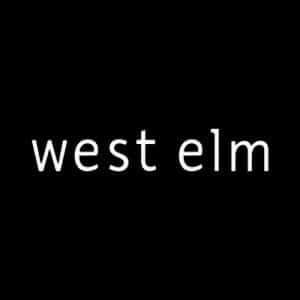The West Elm Mini Pebble Wool Jute Rug is Fair Trade Certified and handcrafted. It is available as a 2.5’ x 7’ runner as well as rugs in sizes 2’ x 3’, 5’ x 8’, 8’ x 10’, and 9’ x 12’. It is made in India by Panipat Rug Weavers, a family-owned rug-weaving workshop founded in Panipat in 1939. These artisans reimagine traditional patterns to create new designs using handcrafted techniques.

West Elm Mini Pebble Wool Jute Rug
Highlights: Available as a runner as well as rugs in multiple sizes. Fair Trade Certified and handcrafted. Jute has inherently eco-friendly properties.
West Elm Mini Pebble Wool Jute Rug at a glance:
| Country of Origin: | India |
| Materials: | 82.8% wool and 17.2% jute |
| Certifications: | Fair Trade |
Overview
West Elm worked with Panipat Rug Weavers to open a Fair Trade-Certified™ facility, which means every rug produced there earns artisans a premium to put toward health care or other initiatives.
The Mini Pebble Jute Rug comprises 82.8% wool and 17.2% jute and has a natural-ivory color. As with all natural-fiber rugs, some shedding of loose fibers is to be expected at first. This will diminish with regular vacuuming, typically within three to six months. A rug pad is recommended to prevent slipping and extend the life of the rug.
In 2014, West Elm became the first home retailer to join Fair Trade USA™. They offer a range of Fair Trade Certified™ products including eco-friendly rugs, bedding and furniture. They also aim to use GOTS certified cotton in all their bedding by 2020, demonstrating their further commitment to eco-friendly practices. It would be nice to see some eco-credentials for the wool used in this rug, however, as well as some animal welfare credentials. Due to the lack of such credentials and the chance that the wool in this rug is treated with mothproofing chemicals, this rug only gets a ⅖ Leaf Score.
The reason for including this rug (and the Millwood Pines wool and jute rug) is because of the inherently eco-friendly properties of jute and, to some extent, wool. Chances are that this is a better bet than most rugs on the market. However, given the lack of eco credentials, anyone with chemical sensitivities might want to avoid this rug and any that don’t explicitly state that they are chemical-free.
West Elm vs. Millwood Pines
Wayfair’s Millwood Pines Jute and Wool Rug and West Elm’s Wool and Jute Rug are hard to choose between in the eco-stakes. West Elm’s rug is certified Fair Trade, but the Millwood Pines rug contains considerably more jute, making it naturally more eco-friendly. As wool is naturally flame-resistant and neither of these rugs appear to have been dyed, there’s a decent chance that many of the toxic chemicals often used in rug manufacture have not been used when making these rugs, which is why I’ve included them here at Leaf Score.
While more expensive, the West Elm rug is likely to feel softer, offer better insulation, and prove more durable, given the greater wool content, compared to the Millwood Pines rug. And, it’s always good to support Fair Trade products where available.